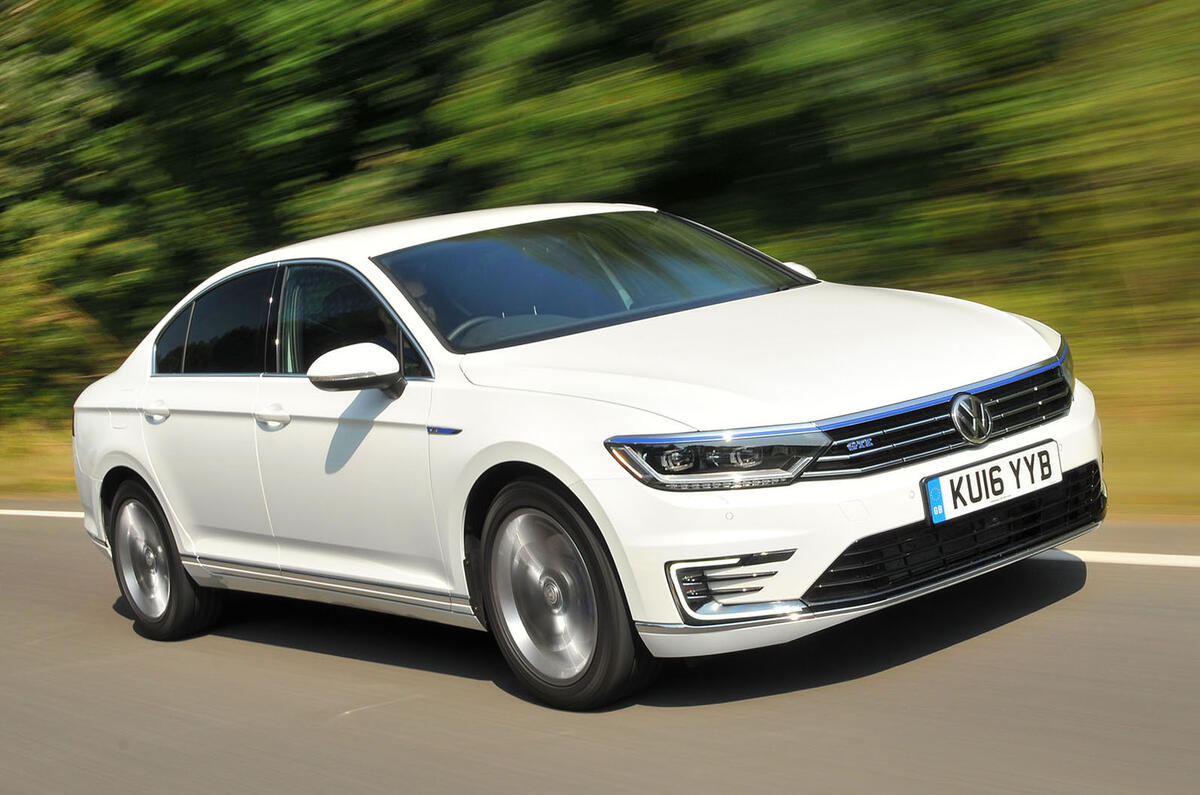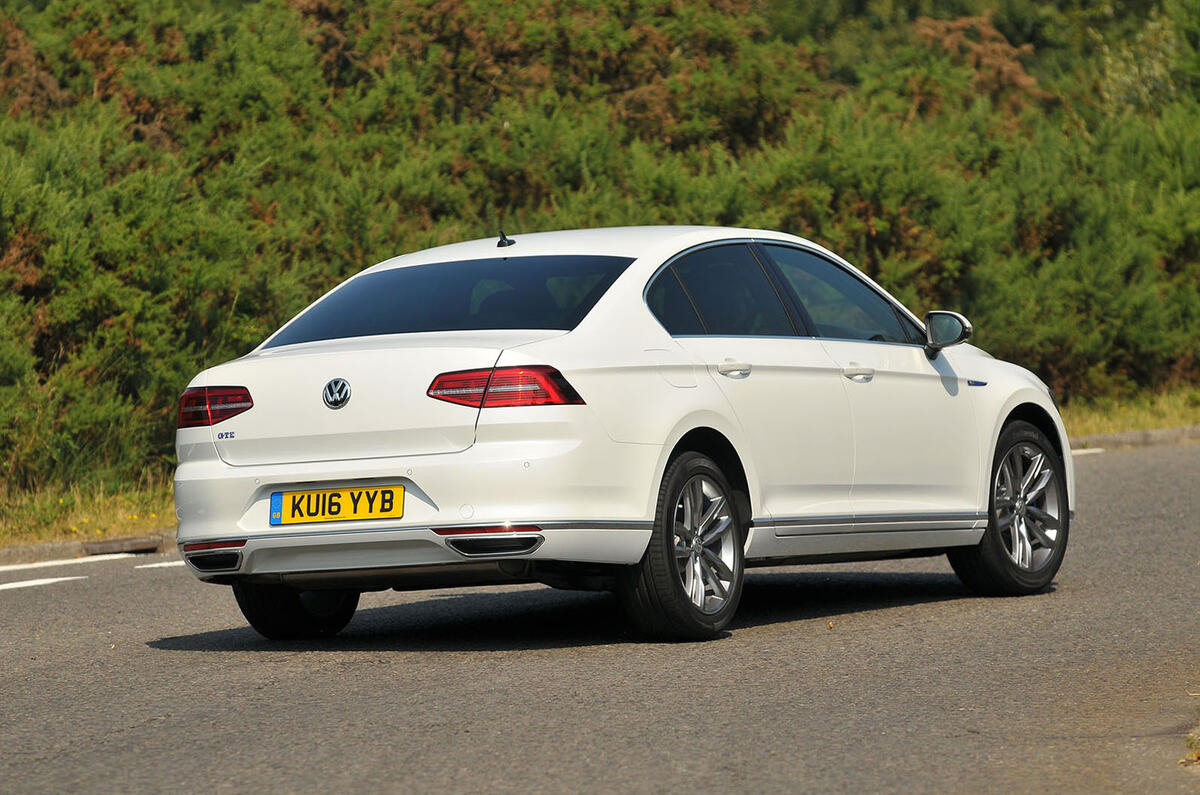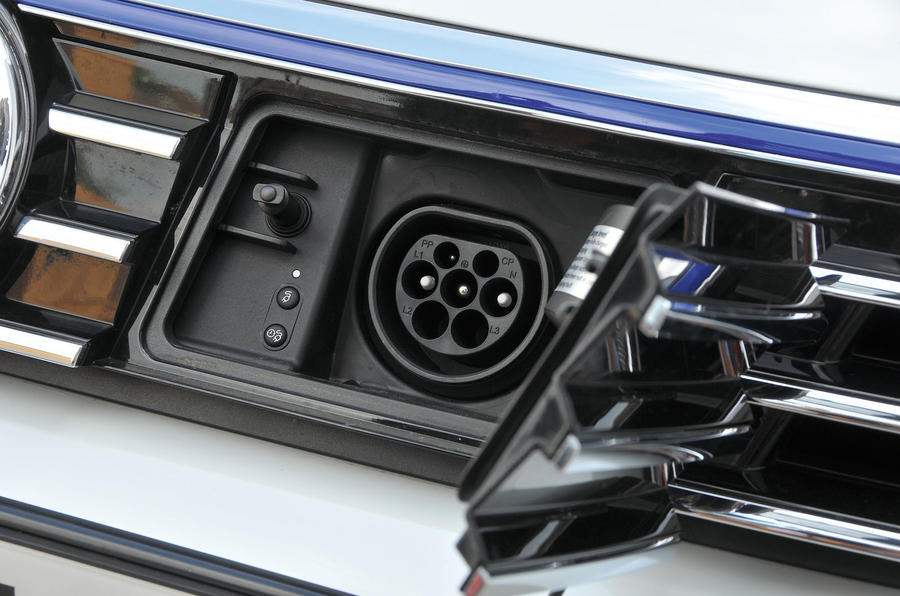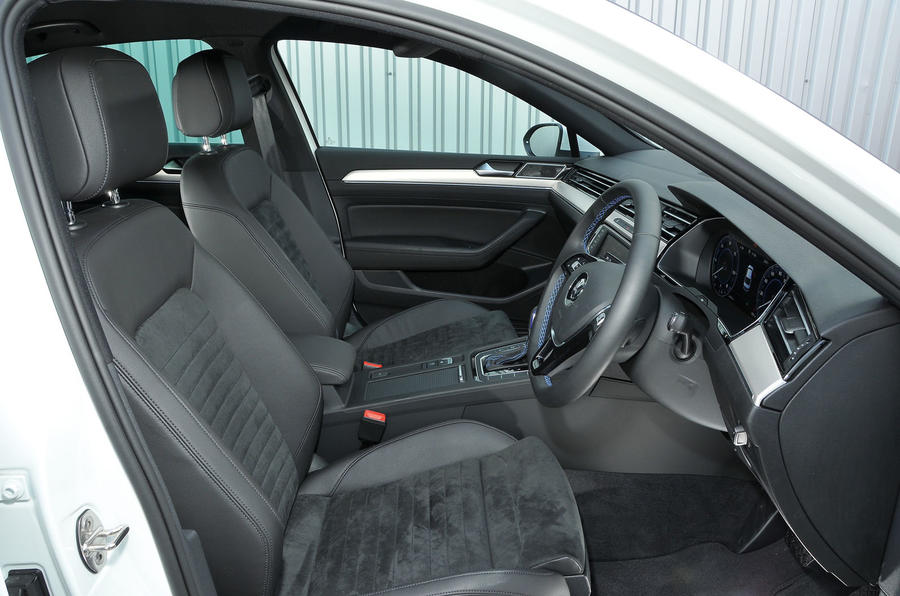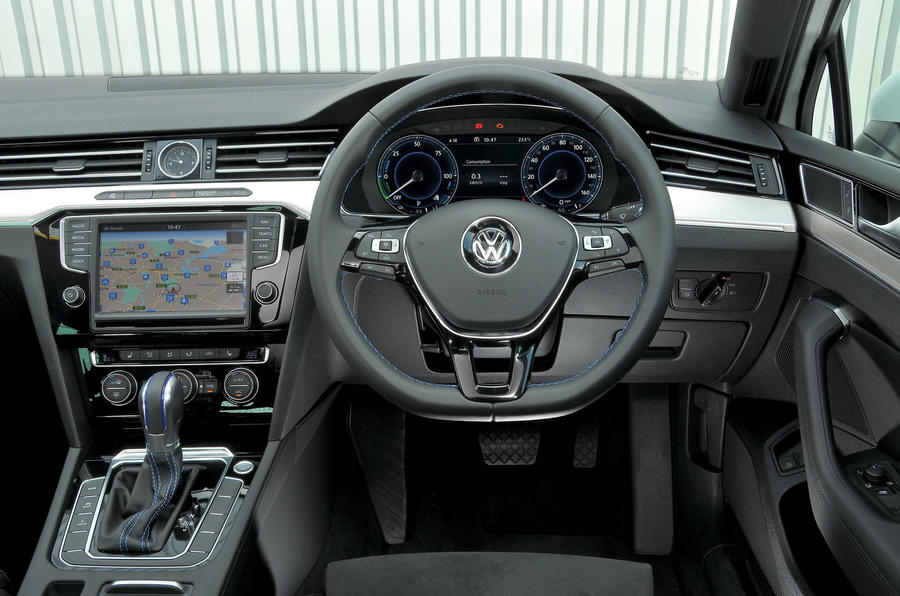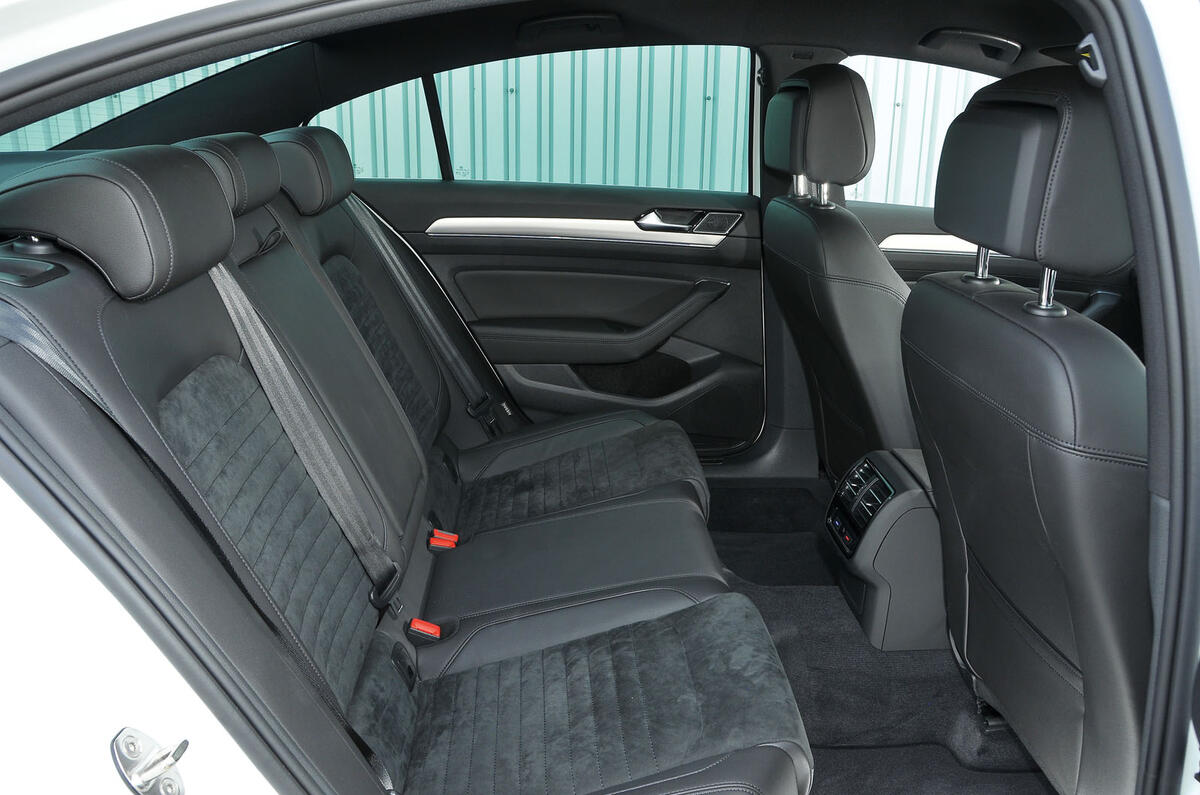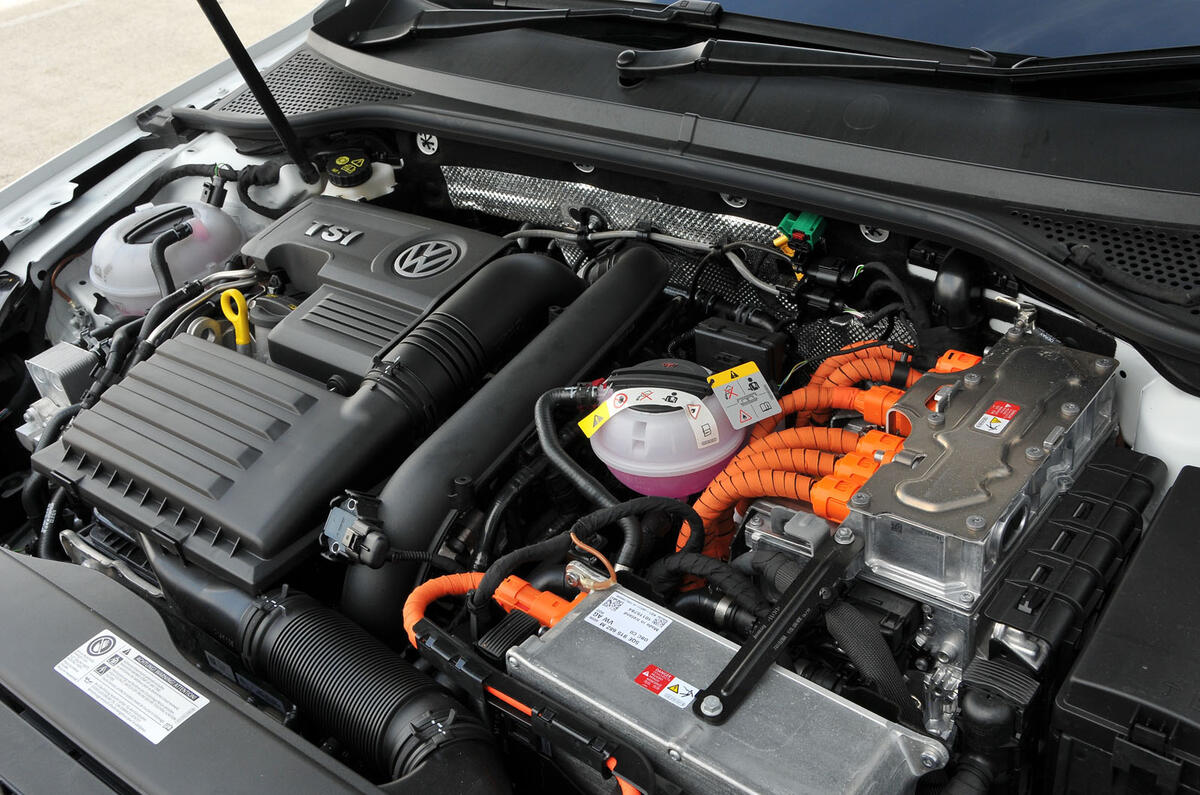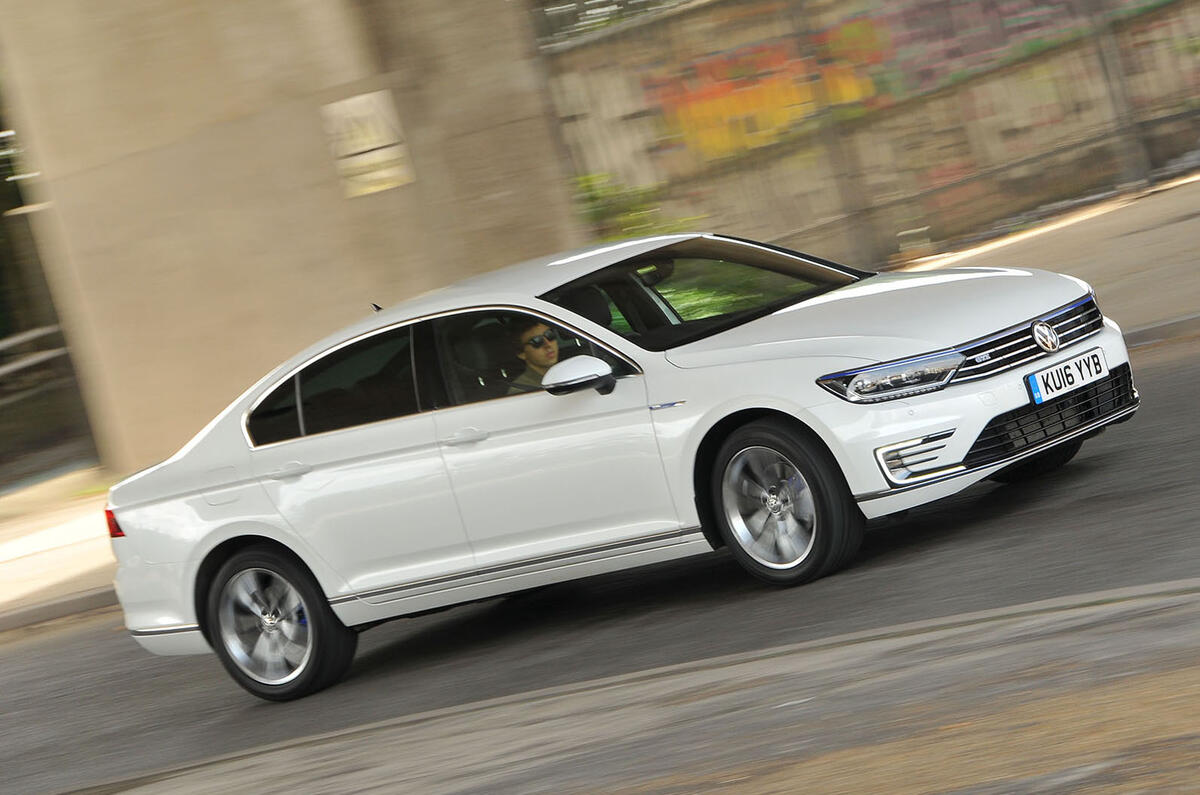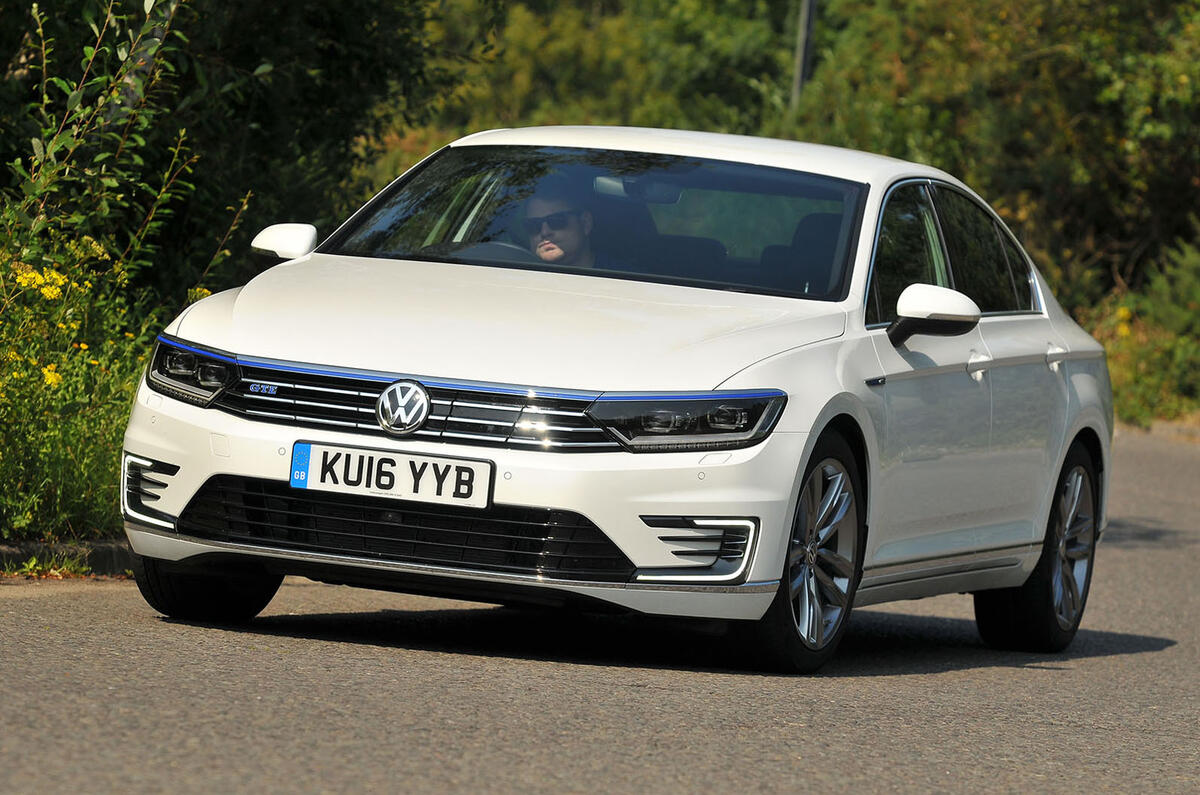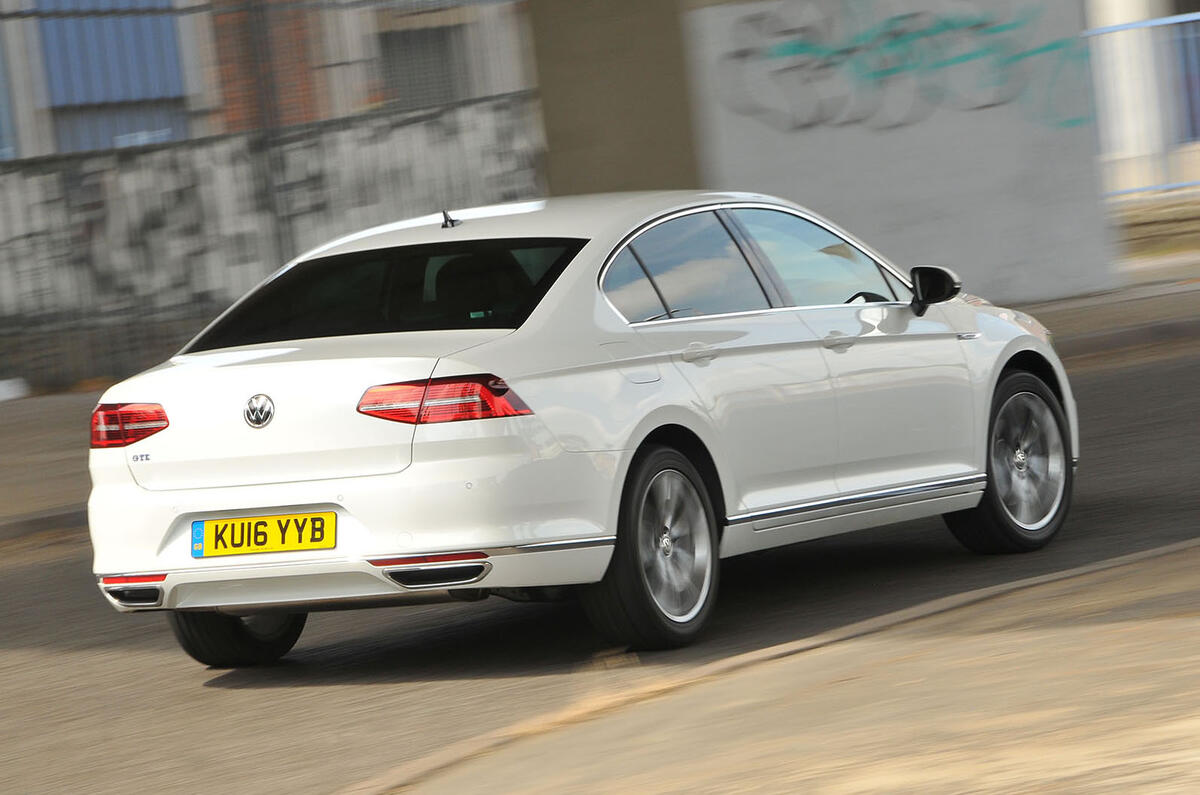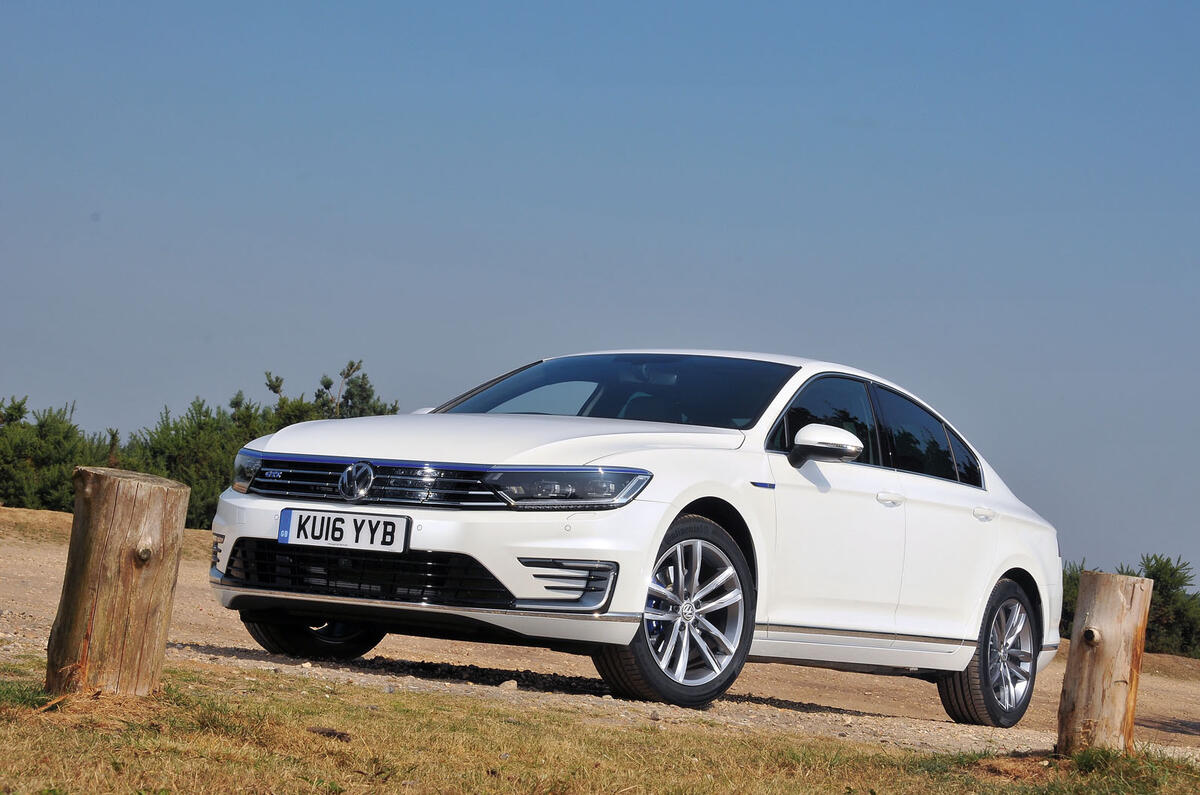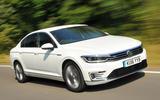As with the Volkswagen Golf, the Volkswagen Passat GTE’s appearance is distinguished by the C-shaped LED running lights housed in its front bumper and the blue bar that extends across the grille and headlights, while the grille conceals the port for charging the battery.
It’s a subtle (and inexpensive) tweak of the model’s styling, although, given the vivid shade of blue, the use of which extends even to the brake calipers, the GTE is easy enough to tell apart from the diesel models in the range.
There has been some modest enhancement of output and battery capacity, but the petrol-electric powertrain is essentially the same as the one that features in the Golf GTE, meaning its combination of a 154bhp 1.4 TSI petrol engine and 113bhp electric motor are shared with the Audi A3 Sportback e-tron, too.
Working in tandem in its GTE drive mode, Volkswagen quotes combined maximum outputs of 215bhp and 295lb ft, which are good for a 0-62mph claim of 7.4sec and a 140mph top speed – despite this Passat’s predictably substantial 1722kg kerb weight.
The bulk of the Passat GTE’s extra mass is accounted for by the eight- module lithium ion battery pack mounted under the rear seats.
With a 9.9kWh capacity and a peak output of 103kW, the battery pack weights 135kg with its management system taken into account. The electric motor it powers, incorporated into the same housing as the six-speed dual-clutch automatic gearbox, constitutes an additional 34kg on top of that.



